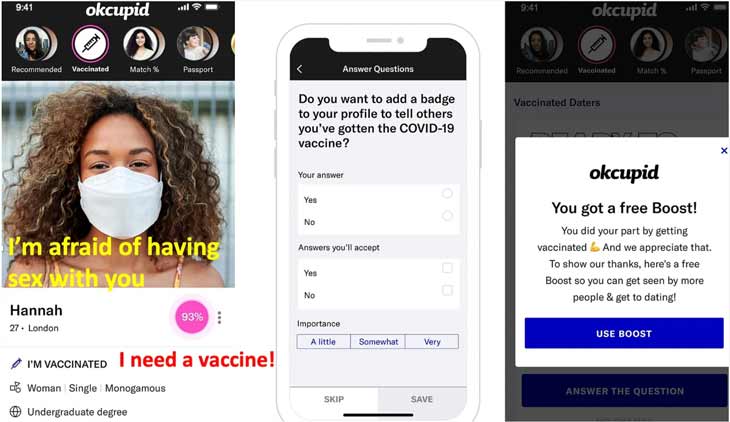[ad_1]
At her annual visit, the patient’s doctor asks if she plans to continue having regular mammograms to screen for breast cancer, and then reminds her that it’s been almost 10 years since her last colonoscopy.
She’s 76. Hmmm.
The patient’s age alone may be an argument against further mammogram appointments. The independent and influential U.S. Preventive Services Task Force, in its latest draft guidelines, recommends screening mammograms for women 40 to 74, but says “the current evidence is insufficient to assess the balance of benefits and harms of screening mammography in women age 75 years or older.”
Screening for colorectal cancer, with a colonoscopy or with a less invasive test, becomes similarly questionable at advanced ages. The task force gives it a C grade for those 76 to 85, meaning there’s “at least moderate certainty that the net benefit is small.” It should only be offered selectively, the guidelines say.
But what else is true about this hypothetical woman? Is she playing tennis twice a week? Does she have heart disease? Did her parents live well into their 90s? Does she smoke?
Any or all such factors affect her life expectancy, which in turn could make future cancer screenings either useful, pointless or actually harmful. The same considerations apply to an array of health decisions at older ages, including those involving drug regimens, surgeries, other treatments and screenings.
“It doesn’t make sense to draw these lines by age,” said Dr. Steven Woloshin, an internist and director of the Center for Medicine and Media at the Dartmouth Institute. “It’s age plus other factors that limit your life.”
Slowly, therefore, some medical associations and health advocacy groups have begun to shift their approaches, basing recommendations about tests and treatments on life expectancy rather than simply age.
“Life expectancy gives us more information than age alone,” said Dr. Sei Lee, a geriatrician at the University of California, San Francisco. “It leads to better decision making more often.”
Some recent task force recommendations already reflect this broader view. For older people undergoing lung cancer tests, for instance, the guidelines advise considering factors like smoking history and “a health problem that substantially limits life expectancy” in deciding when to discontinue screening.
The task force’s colorectal screening guidelines call for considering an older patient’s “health status (e.g., life expectancy, co-morbid conditions), prior screening status and individual preferences.”
The American College of Physicians similarly incorporates life expectancy into its prostate cancer screening guidelines; so does the American Cancer Society, in its guidelines for breast cancer screening for women over 55.
But how does that 76-year-old woman know how long she will live? How does anybody know?
A 75-year-old has an average life expectancy of 12 years. But when Dr. Eric Widera, a geriatrician at the University of California, San Francisco, analyzed census data from 2019, he found enormous variation.
The data shows that the least healthy 75-year-olds, those in the lowest 10 percent, were likely to die in about three years. Those in the top 10 percent would probably live for another 20 or so.
All these predictions are based on averages and can’t pinpoint life expectancy for individuals. But just as doctors constantly use risk calculators to decide, say, whether to prescribe drugs to prevent osteoporosis or heart disease, consumers can use online tools to get ballpark estimates.
For instance, Dr. Woloshin and his late wife and research partner, Dr. Lisa Schwartz, helped the National Cancer Institute develop the Know Your Chances calculator, which went online in 2015. Initially, it used age, sex and race (but only two, Black or white, because of limited data) to predict the odds of dying from specific common diseases and the odds of mortality overall over a span of five to 20 years.
The institute recently revised the calculator to add smoking status, a critical factor in life expectancy and one that, unlike the other criteria, users have some control over.
“Personal choices are driven by priorities and fears, but objective information can help inform those decisions,” said Dr. Barnett Kramer, an oncologist who directed the institute’s Division of Cancer Prevention when it published the calculator.
He called it “an antidote to some of the fear-mongering campaigns that patients see all the time on television,” courtesy of drug manufacturers, medical organizations, advocacy groups and alarmist media reports. “The more information they can glean from these tables, the more they can arm themselves against health care choices that don’t help them,” Dr. Kramer said. Unnecessary testing, he pointed out, can lead to overdiagnosis and overtreatment.
A number of health institutions and groups provide disease-specific online calculators. The American College of Cardiology offers a “risk estimator” for cardiovascular disease. A National Cancer Institute calculator assesses breast cancer risk, and Memorial Sloan Kettering Cancer Center provides one for lung cancer.
Calculators that look at single diseases, however, don’t usually compare the risks to those of mortality from other causes. “They don’t give you the context,” Dr. Woloshin said.
Probably the broadest online tool for estimating life expectancy in older adults is ePrognosis, developed in 2011 by Dr. Widera, Dr. Lee and several other geriatricians and researchers. Intended for use by health care professionals but also available to consumers, it offers about two dozen validated geriatric scales that estimate mortality and disability.
The calculators, some for patients living on their own and others for those in nursing homes or hospitals, incorporate considerable information about health history and current functional ability. Helpfully, there’s a “time to benefit” instrument that illustrates which screenings and interventions may remain useful at specific life expectancies.
Consider our hypothetical 76-year-old. If sh e’s a healthy never-smoker who is experiencing no problems with daily activities and is able, among other things, to walk a quarter mile without difficulty, a mortality scale on ePrognosis shows that her extended life expectancy makes mammography a reasonable choice, regardless of what age guidelines say.
“The risk of just using age as a cutoff means we’re sometimes undertreating” very healthy seniors, Dr. Widera said.
If she’s a former smoker with lung disease, diabetes and limited mobility, on the other hand, the calculator indicates that while she probably should continue taking a statin, she can end breast cancer screening.
“Competing mortality” — the chance that another illness will cause her death before the one being screened for — means that she will probably not live long enough to see a benefit.
Of course, patients will continue to make decisions of their own. Life expectancy is a guide, not a limit on medical care. Some older people don’t ever want to stop screenings, even when the data shows they’re no longer helpful.
And some have exactly zero interest in discussing their life expectancy; so do some of their doctors. Either party can over- or underestimate risks and benefits.
“Patients simply will say, ‘I had a great-uncle who lived to 103,’” Dr. Kramer recalled. “Or if you tell someone, ‘Your chances of long-term survival are one in 1,000,’ a strong psychological mechanism leads people to say, ‘Oh thank God, I thought it was hopeless.’ I saw it all the time.”
But for those seeking to make health decisions on evidence-based calculations, the online tools provide valuable context beyond age alone. Considering projected life expectancy, “You’ll know what to focus on, as opposed to being frightened by whatever’s in the news that day,” Dr. Woloshin said. “It anchors you.”
The developers want patients to discuss these predictions with their medical providers, however, and caution against making decisions without their involvement.
“This is meant to be a jumping-off point” for conversations, Dr. Woloshin said. “It’s possible to make much more informed decisions — but you need some help.”
[ad_2]
Source link





















